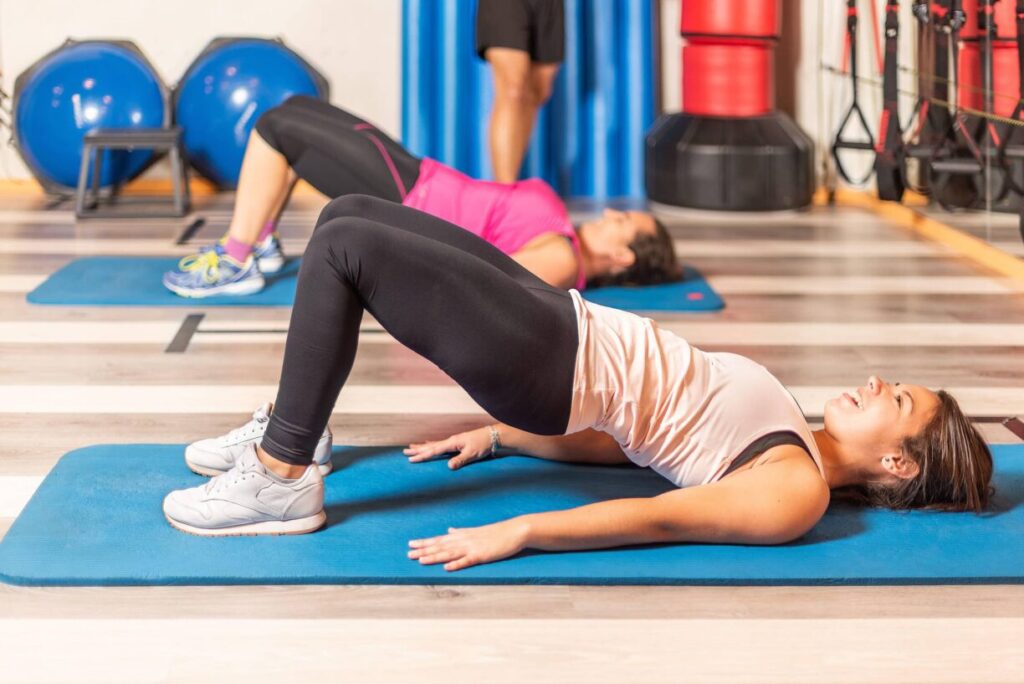
Understanding the Role of Movement & Exercise in Wellness
Movement and exercise are fundamental pillars of holistic wellness. Wellness encompasses not only physical health but also mental and emotional well-being. Regular physical activity can significantly boost all aspects of your health, serving as an essential component of a balanced lifestyle. When you engage in movement, your body releases endorphins, often referred to as “feel-good hormones,” which elevate your mood and reduce stress. These natural chemicals in the brain help alleviate anxiety and depression, giving you a better outlook on life.
The benefits of movement are not limited to emotional health; physical activity strengthens your heart, boosts metabolism, and improves circulation. It helps to regulate blood sugar, improve sleep, and increase energy levels throughout the day. Exercise also supports the immune system, making you less susceptible to illness. Whether it’s a gentle walk or an intense workout, movement is the key to feeling your best—physically and mentally. By consistently integrating movement into your routine, you not only improve your physical health but also nurture your mental resilience, helping you navigate life’s challenges with ease.
Different Types of Movement: Choosing What Works for You
When it comes to movement and exercise, there is no one-size-fits-all approach. Everyone’s fitness journey is unique, and choosing the right type of movement is key to staying motivated and feeling empowered. Low-impact exercises such as yoga, Pilates, and gentle stretching can be particularly beneficial for individuals who are just beginning their fitness journey or who may have physical limitations. These exercises help improve flexibility, build strength, and increase mindfulness—all while minimizing strain on the body.
For those who prefer moderate intensity, activities like brisk walking, cycling, and swimming provide a full-body workout without causing too much impact on the joints. These forms of movement are excellent for improving cardiovascular health, toning muscles, and enhancing endurance. On the other hand, high-intensity exercises like running, strength training, or high-intensity interval training (HIIT) are great for individuals who want to push their limits and achieve faster results. These exercises challenge the body to increase its power and strength, boosting metabolism and fat-burning.
The best fitness plans incorporate a variety of activities. Cross-training offers a well-rounded approach, preventing workout boredom and allowing your body to recover by switching up the movements. By mixing different types of exercise into your routine, you can address all areas of your health, from strength to flexibility, and ensure long-term progress without overloading any one area of your body.
How to Get Started with Movement & Exercise
Getting started with movement and exercise may seem overwhelming, but the key is to start small and set achievable goals. Many people feel daunted by the idea of working out, especially if they have not been active for a long time. It’s important to begin by assessing your current fitness level. This could mean simply taking note of how much you move in a day or consulting with a wellness coach to develop a tailored plan that aligns with your specific needs and goals.
Starting slow is vital to prevent injury and burnout. A wellness coach can help guide you toward realistic goals that push you just enough to see progress but not so much that you feel discouraged. Aim to include small, manageable activities in your day—whether it’s a ten-minute walk in the morning, a short stretching session before bed, or a quick online workout video. As you build strength and stamina, you can gradually increase the intensity and duration of your exercise.
Sustainability is key in creating a routine. It’s easy to get caught up in the idea of an extreme fitness regimen, but it’s important to choose activities that fit into your lifestyle. A wellness coach can help you build a plan that incorporates movement seamlessly into your day-to-day life, making it easier to stay consistent. Whether it’s waking up a little earlier for yoga or cycling during lunch breaks, small changes lead to long-lasting habits. Over time, you’ll build the motivation to continue as exercise becomes an integral part of your routine.
The Mind-Body Connection: How Movement Affects Mental Health
The connection between movement and mental health is undeniable. Exercise has a profound impact on the brain, influencing your mood, cognitive function, and emotional well-being. When you engage in physical activity, your body produces endorphins, which not only enhance your mood but also help reduce feelings of anxiety, depression, and stress.
Furthermore, movement encourages mindfulness, which has been shown to improve mental clarity and focus. Whether it’s the flow of a yoga session or the rhythmic pace of a jog, exercise helps bring you into the present moment, calming the mind and offering a mental reset. For individuals who struggle with stress or emotional struggles, these moments of mental clarity can be crucial in maintaining balance and perspective.
Regular exercise is also a powerful tool for emotional regulation. Physical activity can provide an outlet for pent-up frustration and anger, offering a healthy alternative to harmful coping mechanisms. Over time, you’ll notice that your emotional resilience improves—making it easier to handle life’s ups and downs with a positive attitude. By incorporating movement into your daily routine, you will not only strengthen your body but also foster a more balanced, calm, and focused mindset.
Designing a Balanced Fitness Plan: What to Include
A well-rounded fitness plan is essential to achieving comprehensive health benefits. To support overall wellness, your routine should include exercises that target strength, cardiovascular health, and flexibility. Strength training exercises such as lifting weights, bodyweight squats, or resistance band workouts help build lean muscle mass, which increases metabolism and promotes fat loss.
Cardiovascular exercises, such as running, cycling, or swimming, improve heart health and increase endurance. These exercises elevate the heart rate, promoting efficient circulation and enhanced energy levels. Flexibility exercises, including yoga, Pilates, and stretching routines, are equally important. These movements increase the range of motion in your joints, improve posture, and help prevent injury during other physical activities.
Cross-training allows you to combine different forms of exercise to avoid overtraining and keep your routine exciting. A varied plan not only prevents injury but also supports continuous progress by working different muscle groups in unique ways. Most importantly, make sure your fitness plan is flexible—allowing room for rest and recovery. Your body needs time to repair muscles and rejuvenate after workouts, so always include days of rest to prevent burnout and injuries.
Tracking Your Progress: How to Stay Motivated and Consistent
Staying motivated can be one of the toughest challenges when it comes to maintaining a fitness routine. One of the most effective ways to stay on track is to set clear and measurable goals. Whether you aim to walk 10,000 steps a day, complete a specific workout routine, or achieve a personal best, setting tangible goals provides a roadmap for your fitness journey. A wellness coach can help you break down large goals into manageable steps that are easy to track.
Tracking your progress not only holds you accountable but also offers a sense of accomplishment. Keep a journal, use a fitness app, or consult with a wellness coach regularly to monitor how far you’ve come. Celebrate even the small victories along the way, such as completing a challenging workout or hitting a personal milestone. Motivation often wanes after a few weeks, so having visual reminders of your progress can reignite your determination.
It’s also essential to recognize that setbacks are a normal part of the process. There will be days when you feel less motivated, and that’s okay. The key is to acknowledge those feelings, rest when needed, and come back stronger the next day. Staying consistent doesn’t mean perfection—it means persistence. Embrace your fitness journey, and remember that every step counts toward your health and well-being.
Nutrition & Recovery: Complementing Movement with Proper Care
Movement and exercise can only go so far without proper nutrition and recovery. Fueling your body with the right nutrients before and after exercise ensures that you perform at your best and recover efficiently. Proper hydration is also key to maintaining energy levels during workouts and preventing muscle cramps. A balanced diet rich in lean proteins, whole grains, and fresh fruits and vegetables provides the energy necessary for physical activity and promotes overall well-being.
Recovery is just as important as exercise. Rest days allow your muscles to repair and grow stronger, reducing the risk of injury and burnout. Adequate sleep is also essential for recovery, as it helps replenish energy levels and promotes muscle repair. By integrating proper nutrition, hydration, and sleep into your routine, you can enhance the benefits of your movement practice and maintain long-term health.
Incorporating movement into your life is one of the most effective ways to boost your overall wellness. By staying consistent with exercise, focusing on a balanced routine, and supporting your body with proper nutrition and recovery, you’ll feel stronger, more resilient, and empowered to face whatever life throws your way. Partner with a wellness coach to create a personalized plan that works for your body, your goals, and your lifestyle, and watch as you transform your health for the better.



